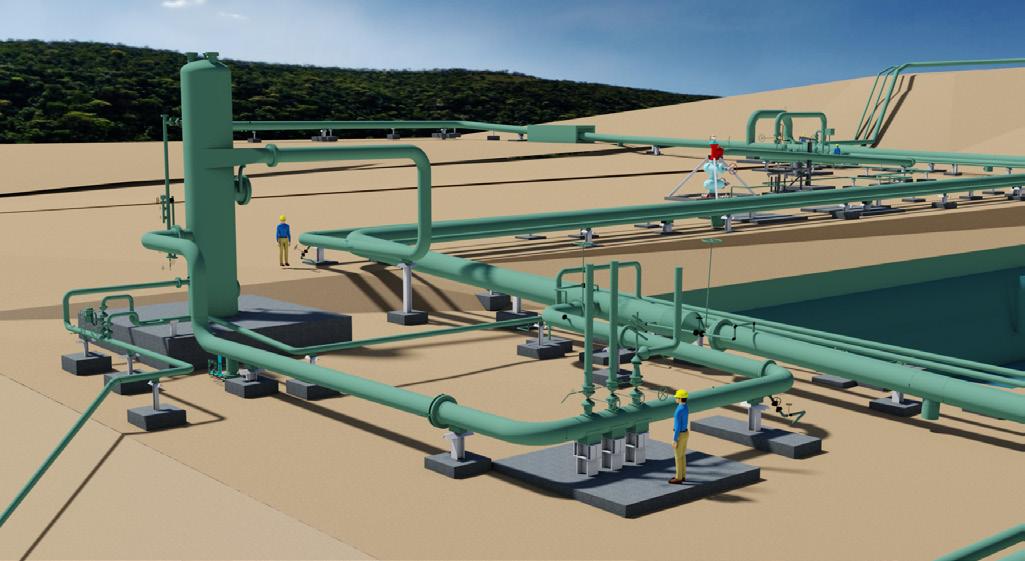In most geothermal areas the geothermal fluid may be considered to be brine because of the typically high chloride content. It may also contain some undesirable tracer elements that pose danger to humans, fauna and flora.
In considering the most convenient way of disposing of this liquid effluent other than into effluentponds on the surface, the idea of injecting the liquid effluent back into the ground has been with the geothermal power industry for a long time (Stefánsson, 1997). Initially the purpose of re-injection was simply to get rid of the liquid effluent in a more elegant way than dumping it on the surface, into lakes or rivers, and even to the ocean. Many technical and economic drawbacks were soon discovered. The more serious of these were the clogging up of injection wells, injection piping and the formations close to the borehole; the cold effluent migrated into the production zone so reducing the enthalpy of the well output with consequent fall-off in power plant output. Injection into sandstone and other porous alluvial formations was and is fraught with loss of injectivity problems that are still not fully understood.
Soon, however, it became generally understood and accepted that returning the effluent liquid back into the reservoir had even greater additional benefits, viz.:
· Greatly reducing the rate of reservoir pressure and fluid yield decline.
· Improved extraction of the heat content contained within the reservoir formations.
· Reducing the fluid withdrawal effect on surface manifestations, e.g. hot pools, steam vents etc.
All the above items serve to maintain resource sustainability and are thus of significant environmental benefit.
Re-injection should be considered an integral part of any modern, sustainable and environmentally friendly geothermal utilization, both as a method of effluent water disposal and to counteract pressure draw-down by providing artificial water recharge (Stefánsson, 1997). Re-injection is essential for sustainable utilization of virtually closed and limited recharge geothermal systems. Cooling of production wells, which is one of the dangers associated with re-injection, can be minimised though careful testing and research. Tracer testing, combined with comprehensive interpretation, is probably the most important tool for this purpose.
Many different methods have and are still being tried to overcome these technical problems mentioned above such as the use of settling tanks that promote polymerisation of the silica molecules and settling in the tanks prior to injection; injection of the effluent liquid directly from the separators at temperatures in the range of 145–160°C, so called “hot injection”, both to avoid contact with atmospheric air and to hinder scaling in the injection system; controlling the pH of the effluent commensurate with reduction in the rate of silica/calcite precipitation using acids and add condensate from the plant to dilute the silica in the brine, to name a few.
The danger of production well cooling can be minimised through careful testing and research. Tracer testing, combined with comprehensive interpretation, is probably the most important tool for this purpose. One way to delay the effects of cooling is also to locate the re-injection wells far enough away from the production area, say 2 km.
Another way gaining popularity is to inject deep into the reservoir, even where there is small permeability, by pumping at high pressures (60–100 bar).
Surface disposal contravenes the environmental statutes of most countries and the use of settling tanks has ceased mostly because of associated cost and complexity. The most commonly adopted injection methods are the last two, i.e. hot re-injection and chemical pH control ones. The main disadvantage of the hot re-injection technique is the lowered overall thermal efficiency and the consequent greater fluid production (more wells to yield the same power output) required. The main disadvantage of the pH control scheme is the very large acid consumption (cost) and uncertainties regarding its long-term effects.
Hot re-injection is precluded in low-temperature power generation and the most common technique is to make use of the reverse solubility of calcite in water by operating the conversion system at a pressure level above the CO2 bubble point and only reduce the pressure once the fluid temperature has attained a level low enough to prevent calcite dissipation prior to re-injection.


